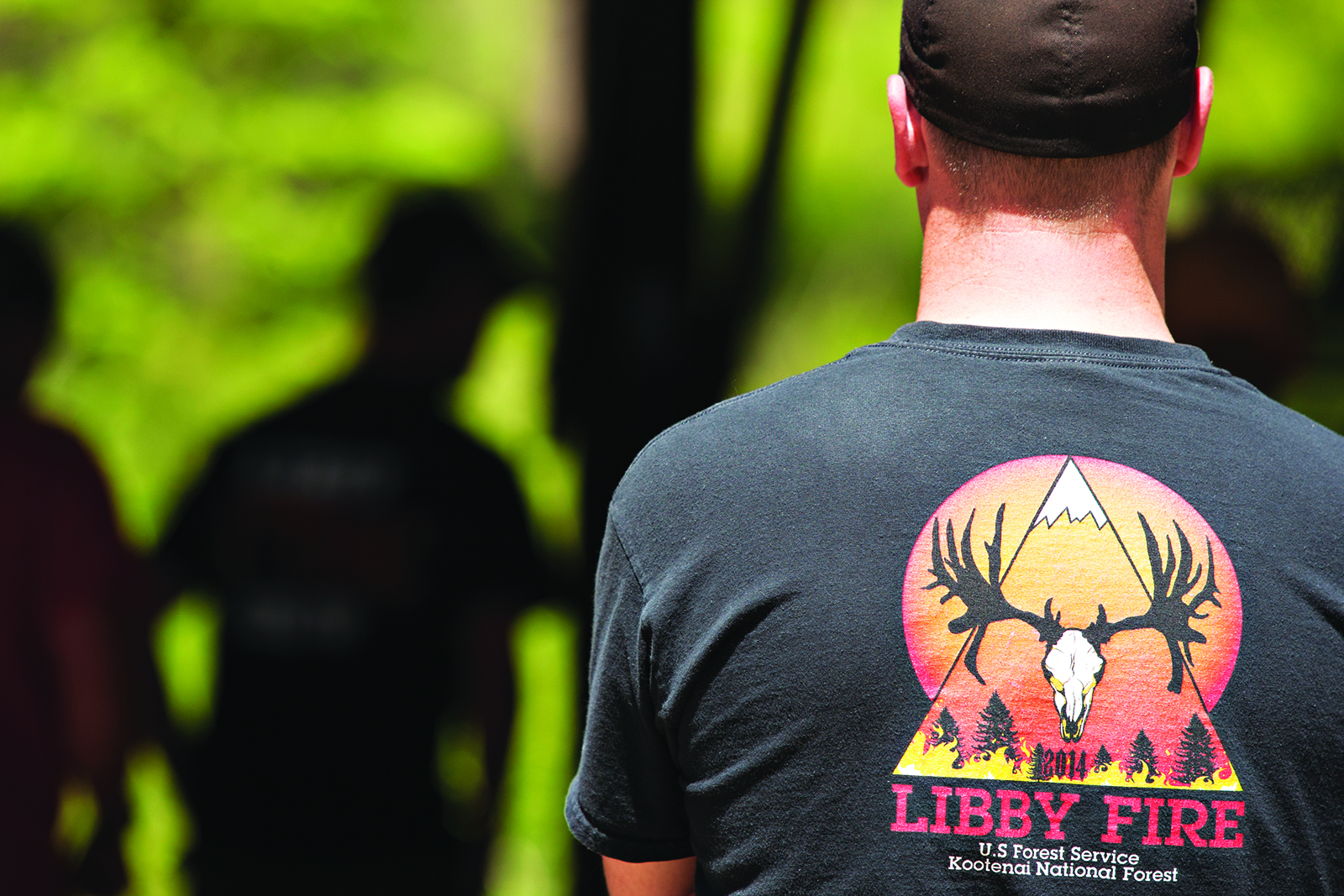Forest Managers Propose Fuels Reduction Project in Libby’s High-Risk Fireshed
Officials with the Kootenai National Forest say the project south of Libby would address hazardous fuel conditions on 1,327 acres of timber in the wildland urban interface
By Tristan Scott
Kootenai National Forest managers say a proposal to treat 1,327 acres of timber along Lincoln County roadways that provide access to residential neighborhoods south of Libby is necessary to address hazardous fuel conditions in the wildland-urban interface (WUI) and should not require a detailed environmental analysis.
“The proposed treatments would reduce fuels to modify fire behavior to allow for successful initial attack and to provide control lines during fire suppression activities,” according to a scoping proposal issued to the public March 1 by Libby District Ranger Nathan Gassmann. “Reducing available fuel will lower flame lengths and fire intensity, minimize the potential for crown fire, increase the effectiveness of suppression efforts, enhance safe public egress in the event of wildfire, and improve firefighter safety.”
Dubbed the Snowshoe Granite 1000 Roadside Fuelbreak project, forest managers would enact the thinning initiative under the 2022 Infrastructure Investment and Jobs Act, also known as the Bipartisan Infrastructure Law, which authorized Congress to direct federal land management agencies to expedite certain projects “addressing the wildfire crisis on federal lands.”
In April 2022, the Kootenai National Forest was granted $19.3 million from the Bipartisan Infrastructure Law to plan and implement wildfire mitigation work on up to 7,200 acres in and around the Kootenai National Forest over the next two years. The high-risk fire areas were identified as part of a 10-year strategy to address wildfire called “Confronting the Wildfire Crisis: A New Strategy for Protecting Communities and Improving Resilience to America’s Forest.”
The Kootenai National Forest was selected as one of the top-10 priority areas in the nation to treat for wildfire threats and was in the group that was first prioritized nationally. The Snowshoe Granite 1000 project was identified as a high-risk area within the greater community of Libby, which is a federally listed “at-risk community,” according to the scoping proposal.
In the case of the Snowshoe Granite 1000 fuelbreak project, forest managers have proposed analysis under a categorical exclusion (CE) exception to the National Environmental Policy Act (NEPA). According to the proposal, the project to construct a shaded fuel break would not have significant environmental impacts and should not be subject to detailed environmental review. It is the second fuels-reduction project in a month that Kootenai National Forest officials have proposed conducting in Lincoln County’s WUI under the Bipartisan Infrastructure Law’s “Fuel Break Categorical Exclusion.”
“We are proposing to implement the project to address hazardous fuel conditions, and conduct proactive fuels management, which in the case of wildfire, allows for increased chance of success for wildland firefighters to control wildfires that pose a threat to communities, private lands, and other values at risk,” the proposal states.
If the project is approved, initial work would begin as soon as Oct. 1, 2024.
“The consequences of not taking action will result in fewer opportunity areas for suppression engagement as large and severe fires in Montana are likely to occur with increasing frequency in the future,” the proposal states. “Wildfires across western North America have increased in number and size over the past three decades, and this trend will continue in response to further warming. As a consequence, the wildland–urban interface is projected to experience substantially higher risk of climate-driven fires in the coming decades.”
The Snowshoe Granite 1000 Fuelbreak is immediately south of Libby. The proposed action geographic area lies entirely within the WUI established by the 2023 Lincoln County Community Wildfire Protection Plan, and is located primarily along yearlong county roads on Forest Service Land, which provide access to private residences.
The project is located in the Granite Creek, Big Cherry Creek, Lower Libby Creek and Flower Creek watersheds. The constructed fuelbreak would run along roadways on National Forest Service lands and will include:
- Granite Lake Road (FS618)
- Snowshoe Road (FS1405)
- Flower Lake Road (FS128)
- Prospect Creek Road (FS14435)
- Granite Creek Road (FS14434)
- Willow Road
- Lower Granite Creek Road (FS4791)
- No Creek Road (FS5145)
- Deep Creek Road (FS4792)
- Hogan Drive
Gassmann is asking members of the public to submit input, concerns, or support for the proposed project by March 30. Electronic comments can be submitted by following this link, while written comments must be submitted by mail, fax, or in person to the Libby Ranger District, Canoe Gulch, Attn: Jennifer Runnels, 12447 Hwy. 37, Libby, 59923. Fax: (406) 283-7531.